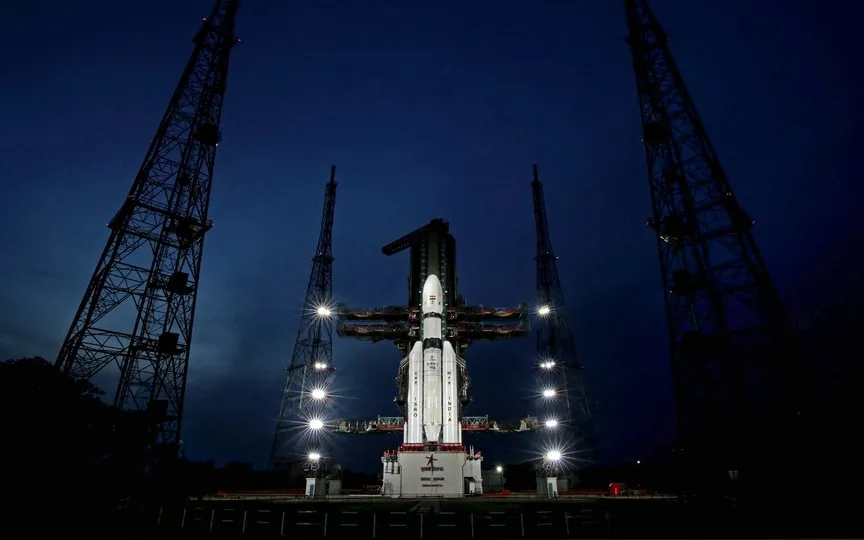The Financial Impact of the Space Race: India’s Expansion and Russia’s Contraction
India’s objective this week is to emerge victorious in the space race by becoming the first nation to land on the moon’s south pole. This pursuit encompasses scientific advancements, national prestige, and the pursuit of financial opportunities in uncharted territory.
India’s Chandrayaan-3 is on its way to land on the Moon’s south pole on Wednesday. If successful, analysts and executives expect an immediate boost to the South Asian country’s nascent space industry.
Launched less than two weeks ago, the Russian Luna-25 had been on track to get there first — before the lander fell out of orbit, possibly taking with it funding for a successor, analysts say.
The seemingly sudden race to reach a previously unexplored region of the moon is reminiscent of the 1960s space race between the United States and the Soviet Union.
But now space is a business, and the moon’s south pole is the prize because of the water ice there, which planners expect will support future lunar colonization, mining and possible Mars missions.
India, under pressure from Prime Minister Narendra Modi, has privatized space launchers and is seeking to open the sector to foreign investment as it aims to quintuple its share of the global launch market over the next decade.
If Chandrayaan-3 is successful, analysts expect India’s space sector to benefit from its reputation for cost-competitive design. The budget of the Indian Space Research Organization (ISRO) was only about $74 million for the mission.
By comparison, NASA is on track to spend about $93 billion on the Artemis lunar program by 2025, the US space agency’s inspector general has estimated.
“The moment this mission succeeds, it raises the profile of everyone involved,” said Ajey Lele, a consultant at the Manohar Parrikar Institute for Defense Research and Analysis in New Delhi.
“When the world looks at a mission like this, they don’t look at ISRO in isolation.”
RUSSIAN CRUNKS
Despite Western sanctions and increasing isolation due to the war in Ukraine, Russia managed to trigger a period. But some experts doubt its ability to fund a successor to Luna-25. Russia has not disclosed what it used for the operation.
“The cost of space exploration is being systematically reduced year after year,” said Moscow-based independent space expert and author Vadim Lukashevich.
Russia’s budget prioritization of the war in Ukraine makes repeating the Luna-25 “highly unlikely,” he added.
Russia had considered a role in NASA’s Artemis program until 2021, when it said it would instead be a partner in China’s lunar program. Few details have been revealed about this company.
China made the first ever soft landing on the far side of the Moon in 2019 and has plans for more missions. Space research company Euroconsult estimates that China will spend $12 billion on its space program in 2022.
THE NASA PLAYBOOK
But by opening up to private money, NASA has provided a playbook for India to follow, officials have said.
For example, Elon Musk’s SpaceX is developing the Starship rocket for its satellite launch business and for transporting NASA astronauts to the surface of the Moon with a three billion dollar contract.
In addition to that deal, SpaceX will spend about $2 billion on Starship this year, Musk has said.
US space companies Astrobotic and Intuitive Machines are building lunar landers that are expected to reach the Moon’s south pole by the end of the year or in 2024.
And companies like Axiom Space and Jeff Bezos’ Blue Origin are developing privately funded successors to the International Space Station. On Monday, Axiom said it had raised $350 million from Saudi and South Korean investors.
Space is still risky. India’s last attempt to land failed in 2019, the same year an Israeli startup failed in its first privately funded month. Japanese startup ispace failed in its landing attempt this year.
“Landing on the moon is difficult, as we can see,” said Bethany Ehlmann, a professor at the California Institute of Technology who is working with NASA on a 2024 mission to map the moon’s south pole and its water ice.
“For the past few years, the moon seems to have been eating spaceships.”




